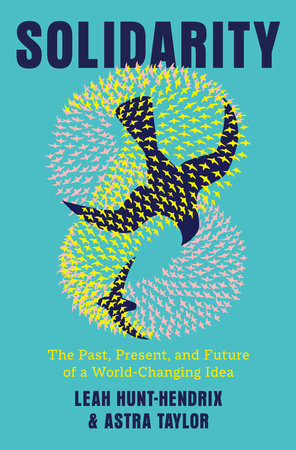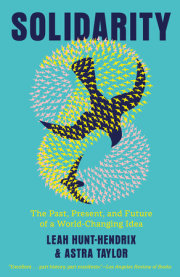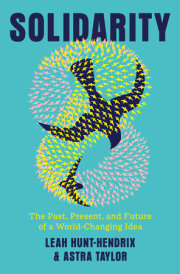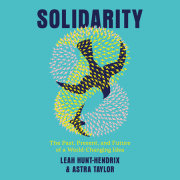Introduction
In 1969, an ambitious and zealous political operative named Kevin Phillips published a book that many now regard as prophetic for its vision of using polarization to fracture and control the American body politic. In
The Emerging Republican Majority, the twenty-eight- year-old Harvard graduate detailed what was already becoming known as the conservative “Southern Strategy”—a strategy to secure electoral victories in the South by stoking racial enmity and splitting off white voters. “Considerable historical and theoretical evidence supports the thesis that a liberal Democratic era has ended and that a new era of consolidationist Republicanism has begun,” Phillips observed. The South had been dominated by the Democratic Party since 1877, or the end of Reconstruction, the brief period after the Civil War when the United States government pursued the path of racial and economic equity. Democratic control could be broken and Republican rule hastened along, Phillips argued, by using issues of identity and grievance to pit populations against one another, making questions of platform and policy less central.
A veteran of Richard Nixon’s 1968 presidential campaign, Phillips was well positioned to influence the Republican Party and the president, to whom his book was warmly dedicated. American voting patterns, Phillips maintained, could be “structured and analyzed” to reveal their logic. “The best structural approach to the changing alignment of American voters,” Phillips wrote, “is a region-by-region analysis designed to unfold the multiple sectional conflicts and group animosities in a logical progression.” Racially and socially polarizing appeals, Phillips predicted, could splinter existing voting blocs and cement conservative victories for generations to come. Phillips did not, of course, invent the politics of divide and conquer; indeed, a century prior, Southern plantation- owning Democrats had successfully deployed such tactics to their own benefit, defending racial hierarchy and fighting back against Reconstruction, setting the stage for the imposition of Jim Crow. But Phillips did help professionalize and normalize the approach. Over a half century after he made his observations, our society remains riven with sectional conflicts and group animosities that a powerful—and bipartisan—elite perpetuate and profit from, financially and politically.
Perversely, rising economic insecurity and ecological instability only further this dynamic. We are living amid a sea change in our social and economic systems, one akin to the Industrial Revolution of the 1800s. The increase in productivity enabled by new technologies, paired with a decrease in taxation of the wealthy, diminished funding for public services, and stagnant wages, has expanded inequality to previously unseen levels. According to a 2023 report by Oxfam, over the last decade, the top 1 percent captured half of all new wealth. And that trend is getting steeper: between 2020 and 2021, that rarefied percentage of the population took home 63 percent of new wealth as the bottom 90 percent gained a combined 10 percent.
While a handful of billionaires can afford to take vanity flights to space and pay top dollar for well-stocked bunkers to ride out cli- mate catastrophes, billions of people live in poverty on a collapsing planet, where forest fires rage and up to one million different species are on the verge of extinction. Sensing opportunity, those in power have responded to our era’s calamities by further exploiting regular people’s vulnerabilities, capitalizing on confusion and resentment, and scapegoating their victims in order to deflect blame away from themselves. The result is a resurgent global right wing, beholden to a corporate elite, steeped in misinformation, and unabashed in their bigotry, with lines of antagonism sharpening around questions of race, religion, immigration status, gender, sexuality, and more—a right wing willing, for example, to spend over $50 million in 2022 on political advertisements attacking LGBTQ+ people, particularly trans children, in order to stir up hate and votes, and to performatively bus immigrants from red states to blue ones, with no concern for their well-being.
Meanwhile, those who claim to represent the political center distinguish themselves by not being as extreme as this right-wing opposition, but they too use division in more subtle ways. For example, they pursue market-based solutions that deepen pre-existing social inequities, advocate for targeted or means-tested government policies that deem some people “worthy” and others “unworthy” of public assistance, and castigate activists for being unreasonable when they argue that safe space be made for members of marginalized groups. Whipped along by a strategy of divide and conquer, liberal democracies the world over appear to be perpetually teeter ng on the edge of social and political disaster, with hard-won social progress being systematically undone.
The premise of this book is simple: shifting away from this tragic course requires the conscious cultivation of solidarity, an understudied concept that must be reclaimed from the history of social and political thought. Fundamentally, we understand solidarity as the recognition of our inherent interconnectedness, an attempt to build bonds of commonality across our differences. It is an ethos and spur to action rooted in the acknowledgment that our lives are inter- twined. Intertwined, however, does not mean indistinguishable— solidarity depends on difference, on recognizing that we are not all exactly alike but that we can still come together and take collective action. It is not unity or sameness, but a way of connecting with others: forging new communities, developing shared visions, and building power to push for social change.
Our actions, policies, and institutions are built on a foundation of concepts and ideas that too often go overlooked in everyday discourse and yet have immense influence over our public and private lives. Solidarity, we believe, is a concept as fundamental to the possibility of democracy as its sisters, liberty and justice; and it is ever more relevant as we fight to make our democracy more egalitarian, sustainable, and pluralistic. But to say that solidarity is the cure to what ails us is the easy part. The challenge is acting on this basic insight and imbuing our social dynamics with a sense of fellow- feeling. It is challenging, in part, because we lack accessible, practical wisdom about solidarity as a political tradition. Nowhere is this truer than in the United States, where American culture emphasizes individualism and personal freedom above all. Beyond certain left-leaning circles where people sign their emails “in solidarity,” the principle rarely appears in mainstream culture or contemporary political discourse.
And yet, despite being undervalued, solidarity has indelibly shaped the modern world. In the chapters ahead, we emphasize the role of solidarity in a particular historical and intellectual tradition that stretches back to the mid-nineteenth century and reaches around the globe, continuing through post–Civil War Reconstruction, labor movements, the creation of the welfare state in Europe and the New Deal in the United States, postcolonial movements for independence, and into the present day—movements that have all, in various ways, fought to expand the bounds of democracy. As this history shows, solidarity requires intentional cultivation; it is not a spontaneous phenomenon. This has only been underscored by recent events, including the Covid-19 pandemic—a phenomenon that exposed our interdependence and vulnerabilities, but that resulted in more distrust and division, including anti-vaccination protests and anti-Asian violence. In the words of historian Jack Hayward, today we live amid the “squalid consequences of liberty without solidarity,” born of the very political bloc Phillips envisioned and animated by what he described as a spirit of “white anger and counter-solidarity.”
Historically, the question of solidarity has been raised at times of massive changes in society, a motif we continue here. Contemporary conceptions of solidarity first began to take form amid the Industrial Revolution and the emergence of modern capitalism, and in the wake of the democratic revolutions of the eighteenth century. As kings were deposed and the Church’s role as a locus of moral authority waned, philosophers and citizens wondered how society could hang together without a monarch or god. What could bind people in a modern, pluralistic, secular age? As we enter a new period of instability and change, we must ask similar questions today. What can enable us to come together despite entrenched social divisions and the immense power of self-interested elites so we can address the crises that threaten us? And more terrifyingly: What happens if we cannot?
Unfortunately, for people seeking to foster solidarity, there are few forums or resources to turn to for advice. As we discuss, tremendous amounts of money and energy have been directed toward suppressing solidarity and attacking the institutions that incubate it, particularly labor unions. There is also a notable lack of scholarly attention to the concept of solidarity. As we began our research into solidarity’s historical evolution, we were struck by the scarcity of historical and theoretical writing on the subject. In comparison to the countless treatises on the evolution and significance of justice, liberty, equality, and democracy that line library shelves and make up the canon of Western political thought, there are remarkably few studies of solidarity. In the words of German philosopher Kurt Bayertz, “Solidarity as a phenomenon lies like an erratic block in the midst of the moral landscape of our Modern Age. It is familiar in an everyday sense, and yet it has remained a foreign body . . . Until now, the geologists familiar with this landscape—Modern Age moral philosophers—have taken it for granted, have circumnavigated it.” We hope this book begins to make the concept clearer and more approachable, so that solidarity does not just appear fit- fully in moments of struggle but can be cultivated consciously and used strategically. It is, we believe, our most important tool.
While there are many insightful histories and accounts of specific campaigns and movements, as well as helpful guides to the art of organizing, few attempt a more holistic assessment or sustained reflection on the concept of solidarity itself. We suspect this lack stems, at least in part, from the fact that solidarity is both a theory and a practice, or what radical educator Paulo Freire called
praxis, the “reflection and action upon the world in order to transform it.” That is, solidarity is not only a thought or a feeling, a theory or a principle—it is also something you do, and it must involve others. In various ways, solidarity is related to, but distinct from, both community and identity. Inasmuch as it is something experienced, it is not a given but must be generated; made, not found. Unlike the concepts of freedom and equality, solidarity does not lend itself to tidy philosophical formulations; unlike democracy, you cannot reduce it to a set of clearly defined procedures; unlike justice, solidarity is not objective and universal but is always invested in specific people and outcomes. Implying positive obligations to act, solidarity is untidy, particular, interested, engaged. These qualities make solidarity a difficult subject for people who prefer their politics more abstract and less messy, but they are precisely why we find the concept so interesting and vital.
No wonder, then, that even those who would like to see more solidarity in the world often know little about the concept’s origins or evolution. Traditionally, the term’s most common association is with the labor movement, which adopted “solidarity” as a battle cry during the Industrial Revolution. This was mainly due to the per- severance of a brush-maker named Johann Philipp Becker, whom the historian Sven-Eric Liedman describes as an “ardent champion of the word solidarity.” An associate of Karl Marx, Becker argued that solidarity was less about morality than materiality; its basis was the common exploitation of workers around the world, and its practice would enable workers to build the power required to wrest concessions from the wealthy. Though Becker prevailed in promoting the word’s usage, Marx and his most prominent followers never truly dealt with the fact that solidarity is something that needs to be constructed, assuming that workers would inevitably come together to mobilize due to their shared economic circumstances. This belief that economic class made solidarity a given was evidenced by Friedrich Engels’s insistence that “the simple feeling of solidarity, based on an insight into the sameness of the class position, is sufficient in order to create amongst all of the laborers of all countries and languages one large and cohesive proletariat party.” Confidence in a prophecy that would not come to pass consigned the word to the realm of rhetoric—a term for union meetings, propaganda, and song, rather than a robust principle that could guide practice and help usher in a truly revolutionary era.
Today, we are in the midst of a massive political realignment in American politics. Both major parties are sites of profound internal conflicts and power struggles: Democrats are torn between a growing progressive flank pushing to redistribute wealth, tackle climate change, and further racial and gender justice and a corporate wing clinging to the increasingly unequal and failing status quo; Republicans are being forced to reconcile their outdated libertarian conservatism with a rabid, conspiracy-driven, white-supremacist fascism. Meanwhile, the neoliberal economic paradigm that both parties have adhered to for decades, which conscripts the state into a project of protecting markets, restricting democracy, and sabotaging solidarity, appears exhausted after fifty years of dominance, but it is unclear what will supersede it, and whether what comes next will be better or worse than our current condition. We sit at a moment of significant opportunity and threat. To move forward, we must grapple with the questions of how to build solidarity and with whom.
Later in his life, Kevin Phillips turned on the Republican Party and wrote multiple books lamenting the deleterious impact of rising economic inequality, but he did not examine his own role as a tactician for the market forces he claimed to abhor, nor did he recognize the need to repair the solidarity he had worked to fray in order to restrain them.16 And so that project falls to us. Successfully resisting plutocratic efforts to split people apart in order to dominate public life requires creating new coalitions that have the power to influence our laws and institutions, and developing the stamina to sustain these new political forms. By conceiving of ourselves as intrinsically bound in relationships of mutuality and care that span generations, we can understand our obligation to provide a secure and dignified life to others while also recognizing that we are entitled to such an existence ourselves.
Copyright © 2024 by Leah Hunt-Hendrix. All rights reserved. No part of this excerpt may be reproduced or reprinted without permission in writing from the publisher.







